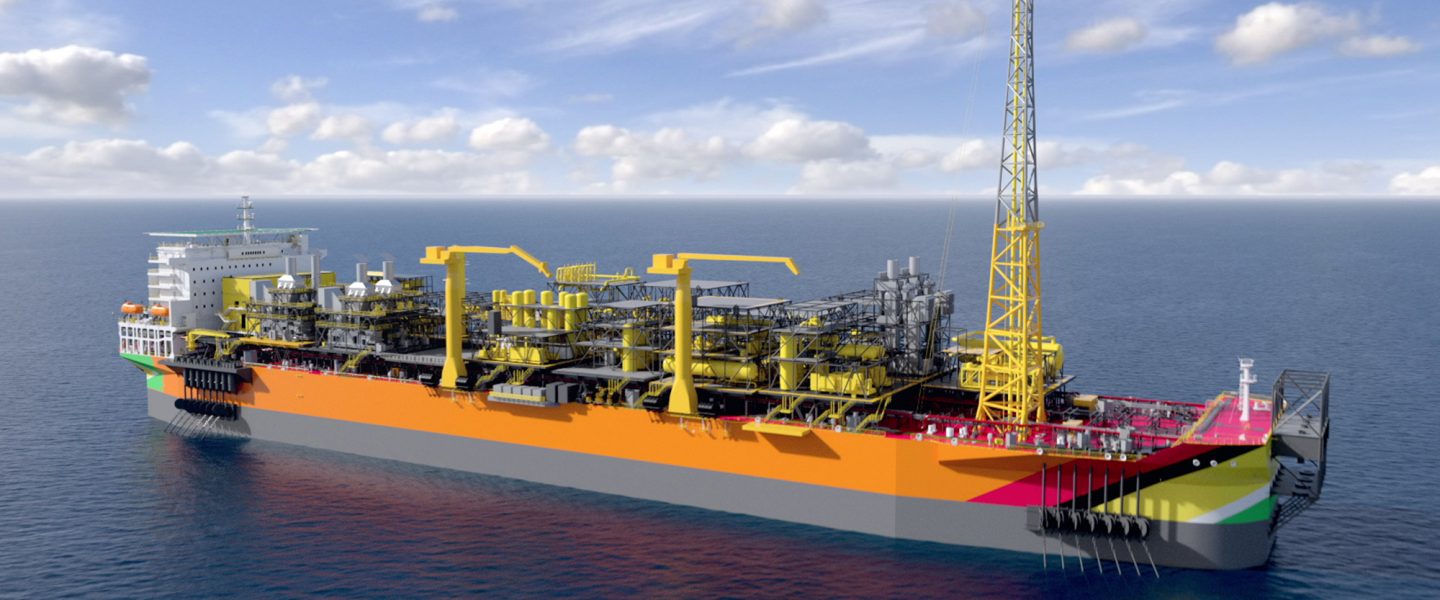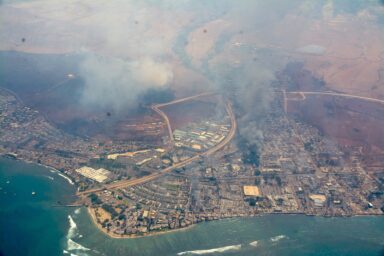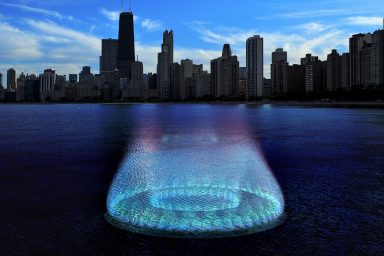A groundbreaking ruling requires “unlimited liability” insurance for major oil developments in Guyana. The ruling is a major blow to ExxonMobil.
|
Listen To This Story
|
This story by Kiana Wilburg and Amy Westervelt was originally published by Drilled Media and is part of Covering Climate Now, a global journalism collaboration strengthening coverage of the climate story.
•
On May 3, 2023, Justice Sandil Kissoon, a High Court judge in Guyana, took both ExxonMobil and Guyana’s EPA to task for not requiring the necessary level of insurance in case of a catastrophic spill that could result from the company’s offshore drilling there. In a blistering, 55-page ruling, Justice Kissoon said Exxon subsidiary Esso Exploration and Production Guyana Limited (EEPGL) was in breach of the insurance provisions of its Environmental Permit (awarded May 31, 2022), and if the breach were not corrected by June 10, the company’s environmental permit, which is necessary for continued drilling, would be suspended.
It’s a major blow to a project Exxon estimates will be its top production site by 2025, representing close to a third of the company’s global oil and gas development.
The environmental permit for drilling offshore in Guyana requires EEPGL to furnish authorities with an insurance package from an independent firm along with an “uncapped” parent liability guarantee from ExxonMobil Corporation to cover all damages in the case of a catastrophic spill. Failure to do so, Justice Kissoon wrote, had put Guyana and its citizens “in grave potential danger of a calamitous disaster.” Not only were these requirements not met, but the Court found that EEPGL was given a free pass by the country’s Environmental Protection Agency (EPA), to start up oil production offshore Guyana. In its initial production phase, EEPGL began pumping 120,000 barrels of oil with a promise to provide insurance “within a reasonable time.”
That “reasonable time” was stretched out for 11 months with the EPA’s blessings. The regulator then gave EEPGL the green light to increase production from 120,000 barrels of oil per day to 150,000 barrels.
Though this was not raised in court, EEPGL was also able to start up a second oil project in Guyana without meeting these insurance terms. That project produced 220,000 barrels of oil with permission already granted to increase production to 250,000 barrels of oil by year end.
The ruling is the first of its kind to be issued on matters of insurance in Guyana and represents a significant contradiction to the EPA’s posture on these matters. It has told citizens on several occasions that the country is well protected, there is nothing to worry about, and that Exxon is being compliant. Exxon has also released various marketing videos making this claim, with EEPGL president Alistair Routledge saying that “there is no limit to what we would do to respond” to a catastrophic oil spill, which had critics of the company wondering why it had resisted writing that commitment down.
“Exxon says all the time, after all we are Exxon, we will never walk away,” says Dr. Vincent Adams, a former U.S. Department of Energy senior manager who ran the Guyana EPA from 2019 to 2021. “Well, you’ll never walk away. That’s nice. Then why not put it in writing?”
As proof of compliance, current EPA management had contended that EEPGL retained the services of an Exxon Consultant for a parent guarantee. It presented the court with drafts of an agreement that was the product of negotiations between EEPGL and state authorities on a $2 billion insurance provision. To put that number in context, the cost of BP’s Deepwater Horizon spill in the Gulf of Mexico was approximately $69 billion. The court did not consider these documents valid evidence given that they were drafts, and represented a guarantee only of a relatively small sum, not the “unlimited guarantee” required by law. Justice Kissoon called the documents submitted by the EPA “entirely without merit” and said they “have no basis in law, fact, and circumstance.”
The court also noted that Guyana is in receipt of a $600 million insurance package from EEPGL, but found that policy wanting as well, since it was secured from an Exxon-owned firm, Ancon UK Ltd. The court noted that this does not meet the standard set out in the environmental permit as it requires such a package from an independent insurance company of standing that equates to Grade A Plus.
The judgment, though expected to be appealed by the EPA and perhaps EEPGL, is seen as a victory for Guyana and the rest of the region that could be potentially impacted by an unmitigated spill at the Liza One Project. It could also reverberate in other oil-producing regions.
“Justice Kissoon put the rule of law above the interests of ExxonMobil, and that’s massive,” Melinda Janki, one of the attorneys who brought the case, said. “That’s what every judge in every country should be doing, and I think this decision sets the standard for judges everywhere, not just in Guyana, but across the world.”
The Liza Phase One environmental impact assessment (EIA) states that a spill “would likely impact marine resources found near the well, such as sea turtles and certain marine mammals that may transit or inhabit the area impacted by a spill.” It also notes that a spill could have transboundary impacts on portions of Venezuela, Trinidad and Tobago, Grenada, St. Vincent and the Grenadines, and St. Lucia. The EIA for EEPGL’s most recently proposed well in the same area notes a “loss-of-well control event,” what the industry refers to as a “well blowout,” which is what happened with the Deepwater Horizon spill, could impact up to 14 different Caribbean islands as well as the northern South American coast. Most of the potentially impacted countries have economies based heavily on tourism and fishing, making an oil spill particularly damaging.
Janki said the lax oversight of oil drilling in Guyana could open the country up to damages claims from other countries in the event of a disaster, making the parent company guarantee all the more important. “Esso Exploration and Production Guyana Limited doesn’t have the billions of dollars needed to compensate people for something like that and what happens then? Well, the Caribbean countries could come to Guyana and ask Guyana to pay compensation. Under international law, you can be liable for transboundary harm.”
In light of these catastrophic impacts and costs that could ensue, the court has given EEPGL until June 10 to provide an unlimited parent guarantee from ExxonMobil. Janki was joined by attorneys Seenath Jairam S.C. and Abiola Wong-Inniss on the case. They represented two Guyanese citizens, Frederick Collins and Godfrey Whyte, who became another important part of the judgment. In their arguments before the court, the EPA and EEPGL argued that these plaintiffs didn’t have standing to bring their case, that average Guyanese citizens bringing cases like these were “meddlesome busybodies” at best. Justice Kissoon ruled instead that it is critically important to democracy in Guyana that citizens be able to bring claims in the public interest, particularly with respect to the environment. Invoking the country’s constitutional right to a healthy environment, Kissoon wrote that this constitutional amendment, which was ratified in 2003, “protected and guaranteed to every citizen the right to a safe and healthy environment with attendant duties and obligations imposed on the State to protect the environment for present and future generations creates an interest and standing in relation to the environment where none previously existed.”
Janki helped to write that amendment back in the 1990s and is part of a handful of Guyanese who have been relentless in their almost 7-year-demand for Exxon’s affiliate to comply with local laws, regulations, and permit requirements.
Other concerned Guyanese have also joined forces to demand better protection for the environment. Several protests have been held near the Office of the President by Red Thread, a women’s led organization. They have, on a weekly basis, called for proper insurance and assurance coverage as more oil developments continue to be sanctioned.
Thus far, the Guyana Government has sanctioned three major oil developments, in addition to two that are already in operation. By 2026/2027 they could take Guyana’s production beyond 1 million barrels of oil per day.
Another group of Guyanese are marching 260 miles across the country in protest of the Stabroek Block Production Sharing Agreement (PSA) signed in 2016 and released a year later after the incessant calls for disclosure from the press.
The former and current administrations have said that they will rely on the use of permits and licenses as a means of applying safeguards where the contract proved deficient. The Liza Phase One Permit was supposed to do just that. Where the contract allowed for only self-insurance, the environmental permit, which was modified and issued on May 31, 2022, went a step further to demand a parent guarantee with no cap.
That document was signed by EEPGL President, Alistair Routledge. He agreed that the company is liable for all costs associated with clean-up, restoration, and compensation. He also agreed to Condition 14.11 of the permit, which states that EEPGL will compensate any person who suffers any loss or damage as a result of a mishap or disaster from its operations.
Justice Kissoon in his ruling stated that the Liza One permit unambiguously calls for obedience to the environmental laws which demands compliance with the Polluter Pays principle and the strict liability legal principle. On these grounds, among others, he ruled that Guyana ought to receive unlimited guarantees or it can potentially be saddled with damages. Anything less, the judge wrote, “represents a dilution of obligations.”
“This is a state of affairs which cannot be condoned on the basis of the potential calamitous consequences were an event to occur and the stipulated unlimited Parent Company Guarantee is not in place,” he wrote.
Justice Kissoon further noted that “If, however, that event occurs and there is no uncapped Parent Company Guarantee in place to indemnify the State, then the State is liable for all that occurs. It is simply not open to the Permit Holder to say it is engaged in a frolic of its own, aided and abetted by the EPA, to unilaterally, arbitrarily, and unlawfully cap its unlimited liability and financial assurance.”
The Guyana Government, which was not a party to the case, has nonetheless said it is appealing the position. Vice President, Dr. Bharrat Jagdeo said at a May 4, 2023 press conference that regulators are treading in dangerous waters when they seek to tell regulators how they must fulfill their duties and that he thought the EPA should appeal.
“The EPA is an independent statutory authority,” Janki said. “Now, if the government is instructing the EPA to appeal, then that’s clearly unlawful, and if the EPA were to then act on the basis of instructions from the politicians, that action would be unlawful and it would be open to judicial review.”
Nonetheless, the attorney general’s chambers has issued a statement noting that an appeal is imminent. “The EPA and the Government of Guyana are of the considered view that the Environmental Permit imposes no obligation on the Permit Holder to provide an unlimited Parent Company Guarantee Agreement and/or Affiliate Company Guarantee Agreement. In this regard, we hold the respectful opinion that the Learned Judge fell into error in his finding,” the statement said.
The Government has also said the $600 million insurance policy from EEPGL is more than enough adding that the EPA can also liquidate EEPGL’s assets which are estimated to be $6 to $8 billion if need be, about a tenth of what would be required to deal with the damages of a catastrophic spill.






